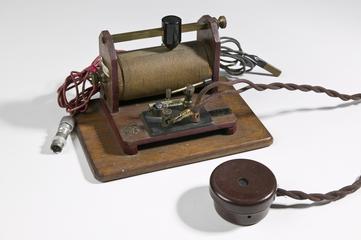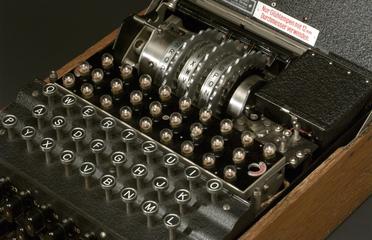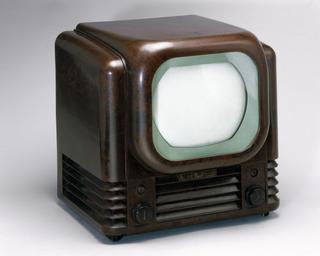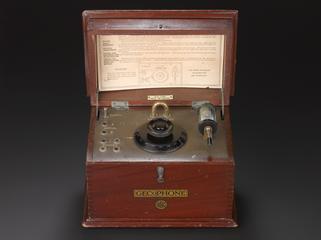
Type C crystal radio receiver
- Made:
- circa 1925 in Rugby

Type C crystal radio receiver, made by British Thomson-Houston Co. Ltd, Rugby, c.1925.
Crystal sets were some of the first publicly available radios. They could be made at home quite cheaply or purchased ready built, like this example, which was more expensive.
Crystal radios are remarkable because they do not need electricity to work. They rely on the power of the signal they receive to function. The downside of this is that the further the radio is from a transmitter the weaker signal you receive and the less useful your radio will be. It also means you cannot increase the volume on the radio, and so need to wear headphones to listen in.
From the mid-1920s valve radios became available. These were much more powerful and could amplify the signal they received. This meant they could pick up a signal from further away and could be played out-loud. Crystal radios could not compete, and soon became a relic of the past.
Details
- Category:
- Radio Communication
- Object Number:
- Y1976.52
- Materials:
- wood (unidentified) and metal (unknown)
- Measurements:
-
Overall (lid closed): 220 mm x 290 mm x 135 mm, 2.8 kg
- type:
- crystal radio receiver
- credit:
- Gift of D.T. Cutler




